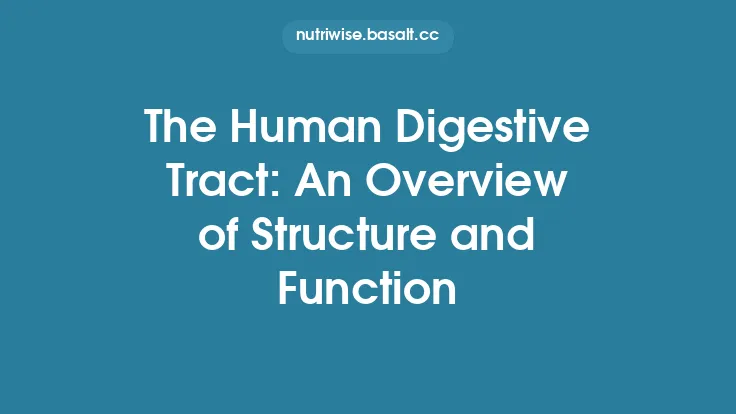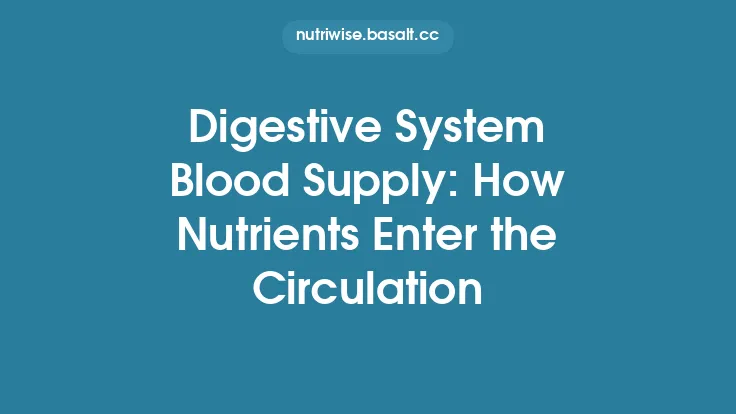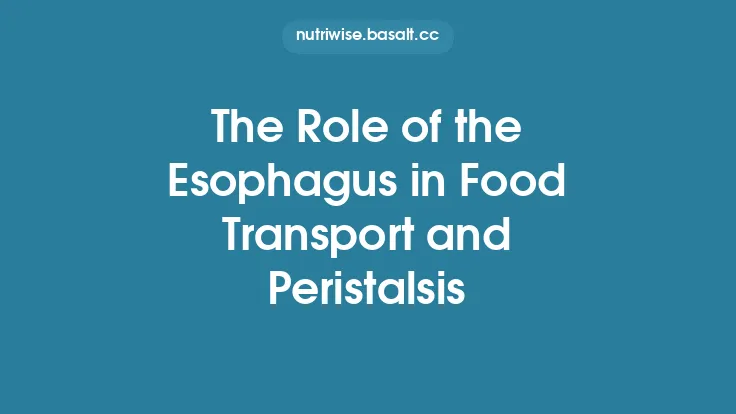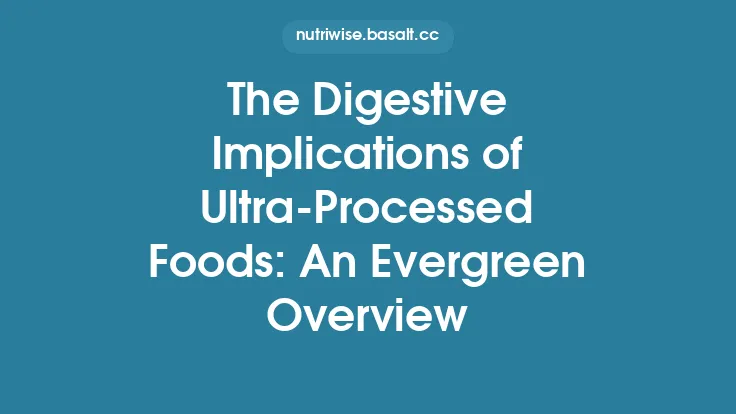The digestive tract is a continuous tube, yet its efficiency hinges on a series of strategically placed muscular valves that regulate the passage of luminal contents. These valves—known as sphincters—act as gatekeepers, ensuring that each segment of the gastrointestinal (GI) system receives material at the appropriate time, in the correct composition, and under optimal pressure conditions. By coordinating the opening and closing of these portals, sphincters preserve the delicate balance between propulsion, mixing, and absorption, while also protecting downstream tissues from potentially harmful reflux or back‑flow. Their precise control is essential for maintaining nutritional homeostasis, preventing bacterial overgrowth, and averting mechanical injury to the mucosa.
Major Sphincters of the Gastrointestinal Tract
| Sphincter | Anatomical Location | Primary Function |
|---|---|---|
| Upper Esophageal Sphincter (UESS) | Junction of pharynx and cervical esophagus | Prevents entry of air during respiration and protects airway from refluxed material |
| Lower Esophageal Sphincter (LES) | Distal esophagus, at the gastro‑esophageal junction | Maintains a high‑pressure zone to prevent gastric contents from refluxing into the esophagus |
| Pyloric Sphincter | Distal stomach, leading into the duodenum | Regulates chyme delivery, allowing controlled emptying into the duodenum |
| Ileocecal Valve | Junction of ileum and cecum | Controls flow of intestinal contents into the large intestine and limits retrograde movement of colonic material |
| Internal Anal Sphincter | Distal anal canal, smooth muscle component | Maintains continence at rest via tonic contraction |
| External Anal Sphincter | Distal anal canal, skeletal muscle component | Provides voluntary control over defecation |
These six sphincters represent the principal “gatekeepers” that orchestrate the unidirectional flow of digesta. Each possesses unique structural adaptations and regulatory mechanisms tailored to its specific physiological demands.
Anatomical Structure and Histology of Sphincters
Sphincters are not homogenous structures; they differ in muscle type, connective tissue composition, and innervation density.
- Smooth‑muscle sphincters (LES, pyloric sphincter, ileocecal valve, internal anal sphincter) consist of circular layers of smooth muscle fibers interlaced with a dense network of collagen and elastin. The circular orientation enables a circumferential constriction that can generate high basal pressures. In the LES, for example, the muscle thickness averages 2–3 mm, with a predominance of longitudinal fibers that provide additional “clasp” support.
- Skeletal‑muscle sphincters (external anal sphincter) are composed of striated muscle fibers derived from the somatic nervous system. Their rapid contractile capacity allows for swift, voluntary closure of the anal canal.
- Mixed sphincters (UESS) contain both smooth and skeletal components. The upper esophageal sphincter’s cricopharyngeus muscle is a skeletal muscle that works in concert with adjacent smooth muscle to achieve a high‑pressure zone.
Histologically, sphincteric smooth muscle exhibits a higher density of dense bodies and intermediate filaments compared with adjacent non‑sphincteric smooth muscle, conferring greater contractile strength. The extracellular matrix (ECM) surrounding sphincteric fibers is enriched in type I collagen, which provides tensile strength, while elastin fibers afford elasticity necessary for rapid relaxation.
Neural and Hormonal Regulation
Autonomic Innervation
- Vagal (parasympathetic) input: Acetylcholine released from vagal efferents binds to muscarinic receptors (M₂, M₃) on sphincteric smooth muscle, promoting relaxation in the LES and pyloric sphincter during the receptive phase of digestion. Vagal stimulation also enhances nitric oxide (NO) synthesis via endothelial nitric oxide synthase (eNOS), a potent smooth‑muscle relaxant.
- Sympathetic input: Noradrenergic fibers release norepinephrine, which activates α₁‑adrenergic receptors, causing contraction of the LES and internal anal sphincter. This sympathetic tone is crucial during stress or exercise, when reflux protection is heightened.
Enteric Neural Circuits
Although the article avoids a deep dive into the enteric nervous system (ENS) basics, it is worth noting that intrinsic excitatory and inhibitory motor neurons within the myenteric plexus directly modulate sphincter tone. For instance, inhibitory motor neurons release NO and vasoactive intestinal peptide (VIP), facilitating sphincter relaxation, whereas excitatory neurons release substance P and acetylcholine to induce contraction.
Hormonal Influences
- Gastrin: Secreted by G‑cells in the antrum, gastrin stimulates pyloric sphincter relaxation, allowing chyme entry into the duodenum during the gastric phase of digestion.
- Cholecystokinin (CCK): While primarily known for gallbladder contraction, CCK also promotes pyloric relaxation, synchronizing pancreatic enzyme release with chyme arrival.
- Motilin: In the interdigestive phase, motilin spikes trigger migrating motor complexes that include coordinated opening of the ileocecal valve, facilitating clearance of residual contents.
- Serotonin (5‑HT): Released from enterochromaffin cells, 5‑HT acts on 5‑HT₁ₚ and 5‑HT₄ receptors to modulate LES tone, especially during swallowing.
Physiological Roles in Digestion and Absorption
- Prevention of Reflux: The LES and UESS create high‑pressure zones that prevent gastric acid and bile from entering the esophagus and airway, respectively. This protection is essential for maintaining mucosal integrity and preventing aspiration.
- Regulation of Gastric Emptying: The pyloric sphincter’s rhythmic opening and closing dictate the rate at which partially digested food (chyme) enters the duodenum. Controlled emptying ensures optimal mixing with pancreatic enzymes and bile, and prevents duodenal overload that could impair nutrient absorption.
- Segregation of Microbial Populations: The ileocecal valve limits the backflow of colonic bacteria into the small intestine, thereby reducing the risk of small‑intestinal bacterial overgrowth (SIBO) and preserving the absorptive environment.
- Maintenance of Continence: The internal and external anal sphincters work in tandem to maintain fecal continence. The internal sphincter provides baseline tone, while the external sphincter offers voluntary control, allowing for appropriate timing of defecation.
- Coordination of Motility Waves: By acting as “reset points,” sphincters segment the GI tract into functional units. This segmentation allows peristaltic waves to be generated and terminated efficiently, optimizing propulsion without causing premature mixing of luminal contents.
Developmental Origins and Embryology
Sphincteric structures arise from distinct embryonic germ layers:
- Smooth‑muscle sphincters develop from the mesodermal splanchnic mesenchyme that surrounds the primitive gut tube. The differentiation of smooth‑muscle cells is driven by transcription factors such as SRF (serum response factor) and MYOCD (myocardin), which orchestrate the expression of contractile proteins (α‑smooth muscle actin, myosin heavy chain 11).
- Skeletal‑muscle components (e.g., external anal sphincter, cricopharyngeus) originate from the paraxial mesoderm (somites). Myogenic regulatory factors (MRFs) like MYOD1 and MYF5 guide the formation of striated fibers.
- Neural crest cells contribute autonomic ganglia that innervate sphincters. Disruptions in neural crest migration can lead to congenital sphincteric dysfunctions, such as achalasia or Hirschsprung’s disease (affecting the internal anal sphincter).
Understanding these developmental pathways is crucial for interpreting congenital anomalies and for designing regenerative therapies.
Pathophysiology: Disorders of Sphincter Function
| Disorder | Primary Sphincter Involved | Mechanism | Clinical Manifestations |
|---|---|---|---|
| Gastroesophageal Reflux Disease (GERD) | LES | Inadequate basal pressure, transient LES relaxations (TLESRs) | Heartburn, regurgitation, esophagitis |
| Achalasia | LES | Loss of inhibitory neurons → failure of LES relaxation | Dysphagia, regurgitation, weight loss |
| Pyloric Stenosis (Infantile) | Pyloric sphincter | Hypertrophic smooth muscle → obstruction | Projectile vomiting, dehydration |
| Ileocecal Valve Dysfunction | Ileocecal valve | Incompetence → reflux of colonic contents | Diarrhea, bloating, SIBO |
| Fecal Incontinence | Internal & external anal sphincters | Reduced resting tone or impaired voluntary control | Leakage of stool, urgency |
| Dyssynergic Defecation | Pelvic floor & sphincters | Inappropriate contraction during attempted evacuation | Constipation, incomplete emptying |
Mechanistic insights often reveal a blend of neural, muscular, and hormonal abnormalities. For instance, GERD is frequently associated with increased frequency of TLESRs mediated by vagal pathways, whereas achalasia stems from selective loss of nitric oxide‑producing inhibitory neurons within the myenteric plexus.
Diagnostic Approaches
- Manometry: High‑resolution esophageal or anorectal manometry quantifies pressure profiles across sphincters, identifying hypotensive or hypertonic states. LES pressure <10 mmHg suggests incompetence; >45 mmHg may indicate spasm.
- Imaging:
- Upper GI series with contrast can visualize pyloric obstruction.
- Fluoroscopic barium studies assess ileocecal valve competence.
- Endoscopic ultrasound (EUS) provides detailed wall-layer imaging of sphincteric musculature.
- Functional Tests:
- pH‑impedance monitoring detects acid reflux episodes, correlating them with LES relaxations.
- Colonic transit studies (radio‑opaque markers) can infer ileocecal valve dysfunction indirectly.
- Electrophysiology: In research settings, electrogastrography and sphincteric electromyography evaluate neural control patterns.
Therapeutic Interventions and Surgical Techniques
- Pharmacologic Modulation:
- Proton pump inhibitors (PPIs) reduce acid load, indirectly decreasing LES stress.
- Prokinetics (e.g., metoclopramide) enhance LES tone via dopaminergic antagonism.
- Calcium channel blockers and nitrates relax hypertonic sphincters (useful in achalasia).
- Endoscopic Procedures:
- Pneumatic dilation for achalasia stretches the LES.
- Botulinum toxin injection temporarily paralyzes hypertonic sphincters (LES, pylorus) by inhibiting acetylcholine release.
- Endoscopic pyloromyotomy (G-POEM) treats refractory gastroparesis by cutting pyloric muscle fibers.
- Surgical Options:
- Nissen fundoplication reinforces LES pressure by wrapping gastric fundus around the distal esophagus.
- Heller myotomy surgically cuts LES muscle fibers to relieve achalasia.
- Ileocecal valve reconstruction (rare, usually in Crohn’s disease) restores barrier function.
- Sphincteroplasty for anal sphincter injuries involves overlapping muscle flaps to restore continence.
- Neuromodulation:
- Sacral nerve stimulation (SNS) improves external anal sphincter function in fecal incontinence.
- Vagal nerve stimulation is under investigation for refractory GERD.
Research Frontiers and Emerging Technologies
- Bioengineered Sphincter Constructs: Tissue‑engineered smooth‑muscle rings seeded with patient‑derived myofibroblasts and integrated with micro‑electrode arrays aim to replace damaged sphincters (e.g., post‑resection LES reconstruction).
- Optogenetic Control: Transgenic expression of light‑sensitive ion channels in sphincteric smooth muscle permits precise, non‑invasive modulation of tone using targeted illumination—a promising avenue for on‑demand LES relaxation during endoscopic procedures.
- Molecular Imaging of NO Signaling: Novel fluorescent probes that bind to NO‑derived nitrosylated proteins enable real‑time visualization of inhibitory neural activity governing sphincter relaxation.
- Artificial Intelligence (AI) in Manometry: Machine‑learning algorithms analyze high‑resolution pressure topography to predict pathological patterns (e.g., TLESR frequency) and guide personalized therapy.
- Microbiome‑Sphincter Interactions: Emerging data suggest that microbial metabolites (short‑chain fatty acids, bile‑acid derivatives) can modulate sphincter tone via G‑protein‑coupled receptors, opening potential for probiotic or dietary interventions in sphincteric disorders.
Summary and Clinical Takeaways
- Sphincters are specialized muscular valves that orchestrate the orderly flow of luminal contents, protect mucosal surfaces, and maintain continence.
- Their architecture varies (smooth, skeletal, or mixed muscle) and is reinforced by a robust extracellular matrix, enabling high basal pressures and rapid relaxation.
- Regulation is multifactorial: autonomic nerves, intrinsic enteric circuits, and a suite of gastrointestinal hormones converge to fine‑tune sphincter tone.
- Dysfunction can manifest as reflux, obstruction, bacterial overgrowth, or incontinence, each with distinct pathophysiological underpinnings.
- Diagnosis relies on pressure measurements, imaging, and functional testing, while treatment ranges from pharmacologic agents to advanced endoscopic and surgical interventions.
- Ongoing research into bioengineered tissues, optogenetics, and microbiome‑mediated modulation promises to expand therapeutic options beyond current standards.
By appreciating the intricate design and control of these gatekeepers, clinicians and researchers can better diagnose, treat, and ultimately prevent the cascade of complications that arise when the flow of the digestive system is disrupted.





